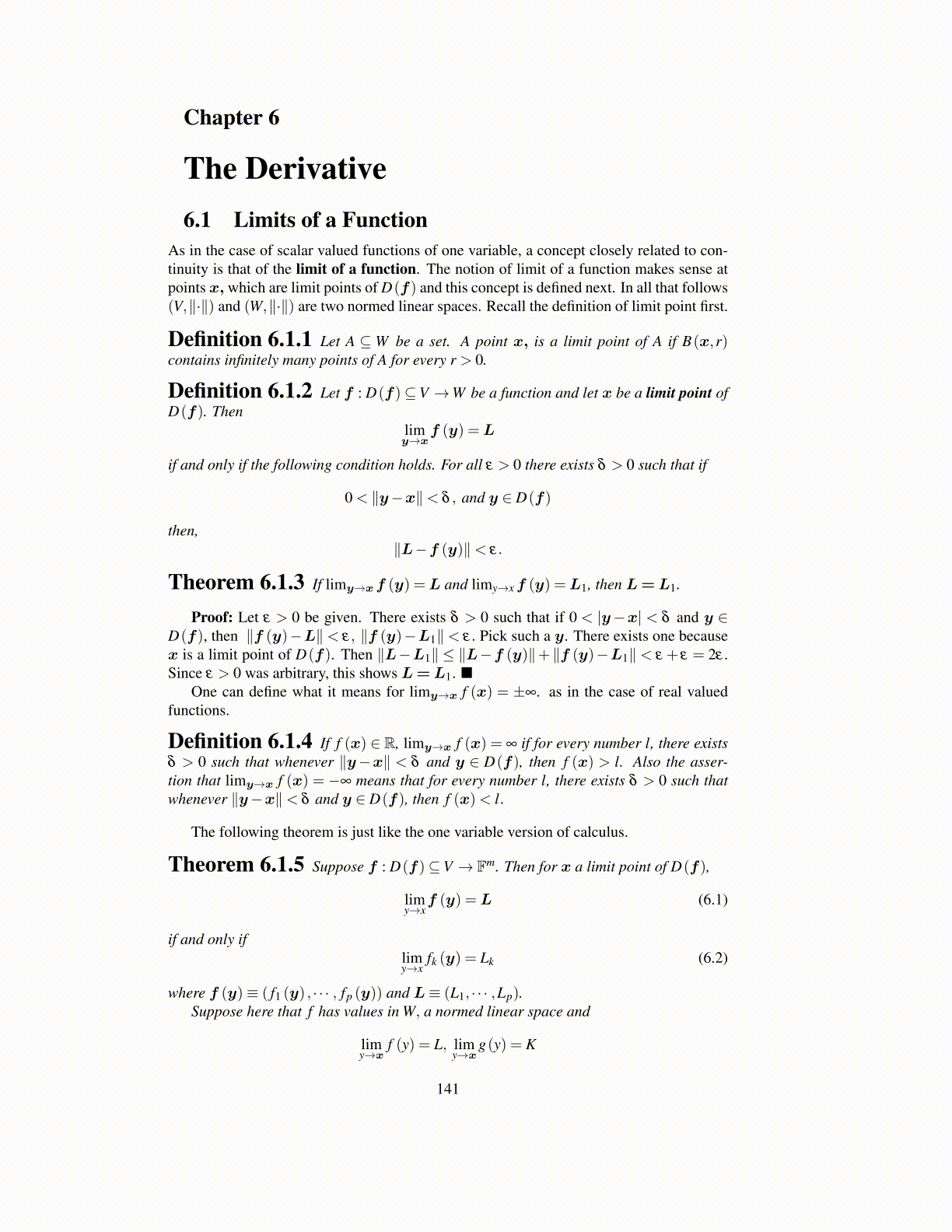
Chapter 6
The Derivative6.1 Limits of a Function
As in the case of scalar valued functions of one variable, a concept closely related to con-tinuity is that of the limit of a function. The notion of limit of a function makes sense atpoints x, which are limit points of D(f) and this concept is defined next. In all that follows(V,∥·∥) and (W,∥·∥) are two normed linear spaces. Recall the definition of limit point first.
Definition 6.1.1 Let A ⊆W be a set. A point x, is a limit point of A if B(x,r)contains infinitely many points of A for every r > 0.
Definition 6.1.2 Let f : D(f)⊆V →W be a function and let x be a limit point ofD(f). Then
limy→x
f (y) =L
if and only if the following condition holds. For all ε > 0 there exists δ > 0 such that if
0 < ∥y−x∥< δ , and y ∈ D(f)
then,∥L−f (y)∥< ε.
Theorem 6.1.3 If limy→xf (y) =L and limy→xf (y) =L1, then L=L1.
Proof: Let ε > 0 be given. There exists δ > 0 such that if 0 < |y−x| < δ and y ∈D(f), then ∥f (y)−L∥< ε, ∥f (y)−L1∥< ε. Pick such a y. There exists one becausex is a limit point of D(f). Then ∥L−L1∥ ≤ ∥L−f (y)∥+∥f (y)−L1∥ < ε + ε = 2ε .Since ε > 0 was arbitrary, this shows L=L1. ■
One can define what it means for limy→x f (x) = ±∞. as in the case of real valuedfunctions.
Definition 6.1.4 If f (x) ∈ R, limy→x f (x) = ∞ if for every number l, there existsδ > 0 such that whenever ∥y−x∥ < δ and y ∈ D(f), then f (x) > l. Also the asser-tion that limy→x f (x) = −∞ means that for every number l, there exists δ > 0 such thatwhenever ∥y−x∥< δ and y ∈ D(f), then f (x)< l.
The following theorem is just like the one variable version of calculus.
Theorem 6.1.5 Suppose f : D(f)⊆V → Fm. Then for x a limit point of D(f),
limy→x
f (y) =L (6.1)
if and only iflimy→x
fk (y) = Lk (6.2)
where f (y)≡ ( f1 (y) , · · · , fp (y)) and L≡ (L1, · · · ,Lp).Suppose here that f has values in W, a normed linear space and
limy→x
f (y) = L, limy→x
g(y) = K
141